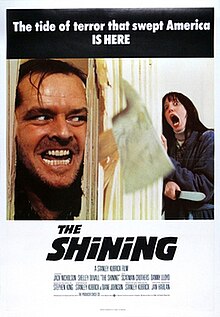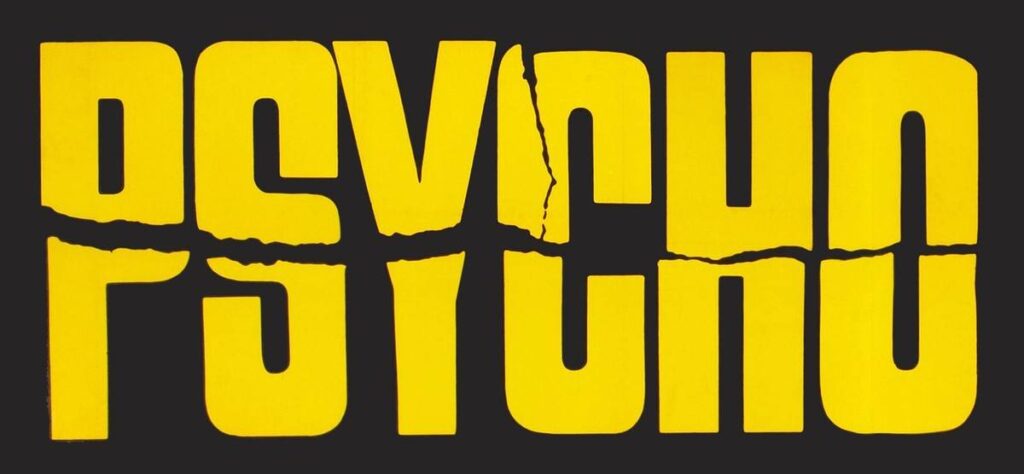Stanley Kubrick’s Haunting Masterpiece of Psychological Horror
Few films in horror history have sparked as much debate, analysis, and sheer terror as Stanley Kubrick’s The Shining (1980). Based on Stephen King’s novel but famously diverging from its source material, The Shining is a slow-burn descent into madness, isolation, and supernatural dread. With its hypnotic visuals, unsettling score, and Jack Nicholson’s unhinged performance, Kubrick crafted a film that lingers in the mind long after the credits roll. Let’s step into the haunted halls of the Overlook Hotel and uncover why The Shining remains a cornerstone of horror cinema.

The Plot: A Family’s Nightmare in the Overlook
Jack Torrance (Jack Nicholson), a struggling writer with a violent past and a drinking problem, takes a job as the winter caretaker of the isolated Overlook Hotel in the Colorado Rockies. Hoping the solitude will help him finish his novel, he moves in with his wife Wendy (Shelley Duvall) and their young son Danny (Danny Lloyd), who possesses psychic abilities he calls “the shining.”
From the beginning, ominous signs emerge. Danny’s invisible friend “Tony” warns him about the hotel, whispering, “Don’t go there.” The hotel’s chef, Dick Hallorann (Scatman Crothers), who also has the shining, senses Danny’s power and warns him about the Overlook’s dark history—including a previous caretaker who murdered his family.
As winter closes in and the hotel is cut off by snow, Jack’s sanity unravels. He becomes obsessed with the hotel’s past, hallucinating conversations with the ghostly former caretaker Delbert Grady, who urges him to “correct” his family. Meanwhile, Danny experiences terrifying visions: the ghostly Grady twins, a decomposing woman in Room 237, and rivers of blood pouring from the elevators. Wendy, caught between her husband’s growing rage and her son’s premonitions, realizes too late that the Overlook is alive—and it wants Danny.
The tension explodes when Jack, fully possessed by the hotel’s evil, attacks Wendy with an axe in one of cinema’s most iconic scenes (“Heeere’s Johnny!”). Danny flees into the frozen hedge maze outside, with his deranged father in pursuit, leading to a chilling climax where the Overlook’s true power—and Jack’s tragic fate—are revealed.
The film’s infamous final shot—a 1921 photograph showing Jack among the hotel’s ghosts—hints that the Overlook’s cycle of violence is eternal.
Why The Shining is a Masterpiece
1. Kubrick’s Meticulous Craftsmanship
Every frame of The Shining is deliberate. Kubrick’s use of symmetrical shots, eerie tracking sequences (like Danny’s tricycle rides through the halls), and the hotel’s impossibly sprawling layout create a sense of disorientation. The Overlook itself becomes a character—a labyrinth of ghosts, blood-filled elevators, and haunted rooms.
2. Jack Nicholson’s Iconic Performance
Nicholson’s portrayal of Jack Torrance is legendary. His gradual transformation from a flawed but sympathetic father to a grinning, axe-wielding madman (“Here’s Johnny!”) is both terrifying and mesmerizing. Kubrick pushed Nicholson to extremes, resulting in a performance that walks the line between realism and surreal horror.
3. Shelley Duvall’s Real Trauma
Duvall’s portrayal of Wendy—a woman pushed to the brink—is heartbreakingly raw. Kubrick’s perfectionism took a toll on her; she endured 127 takes of the baseball bat scene and later suffered health issues from the stress. Her fragility onscreen feels unnervingly real.
4. Danny Lloyd and the Supernatural
Danny’s “shining” ability and his encounters with the ghostly Grady twins (“Come play with us”) are some of the film’s most chilling moments. Lloyd, just six years old during filming, was shielded from the horror context, making his performance eerily authentic.
5. The Sound Design and Score
Wendy Carlos’ haunting synthesizer score, mixed with discordant classical pieces (like Bartók’s Music for Strings, Percussion and Celesta), amplifies the dread. The absence of sound in key scenes (like Danny’s tricycle rides) is equally unsettling.
Behind the Scenes: Kubrick’s Obsession
- The Infamous Door Scene: Nicholson improvised “Here’s Johnny!”—a nod to The Tonight Show—but Kubrick almost cut it, thinking it was too comedic.
- The Overlook’s Impossible Architecture: The hotel’s layout defies logic (windows where none should exist, hallways that couldn’t connect) to unsettle viewers subconsciously.
- Stephen King’s Disapproval: King famously disliked Kubrick’s adaptation, arguing it stripped the novel’s emotional core. He later produced a TV version closer to his vision.
Theories and Legacy
The Shining has spawned endless interpretations:
- The Moon Landing Hoax Theory: Conspiracy theorists claim Kubrick hid clues that he faked the Apollo footage.
- Native American Genocide Subtext: The hotel is built on a burial ground, and imagery (like the Calumet baking powder can) hints at historical violence.
- The “Kubrick Code”: Fans dissect hidden messages, from the recurring number 42 to the mysterious final photo.
Why The Shining Still Terrifies
Unlike modern jump-scare fests, The Shining preys on psychological horror—isolation, familial collapse, and the unreliability of perception. Its ambiguity (Is Jack possessed, or just insane? Are the ghosts real?) ensures endless debate. The film’s visuals—the blood elevator, the woman in Room 237, the maze chase—are seared into pop culture.
Final Thoughts
The Shining isn’t just a horror movie; it’s a cinematic puzzle that rewards repeat viewings. Kubrick’s cold, clinical direction contrasts with the story’s emotional brutality, creating a uniquely unsettling experience. Whether you’re analyzing its symbols or just hiding behind your hands, The Shining remains a benchmark for horror.
Engage with Me!
What’s your take on The Shining? Do you think Jack was always unhinged, or did the Overlook corrupt him? And what’s the scariest moment for you—Room 237, the twins, or something else?
If you love psychological horror, check out my breakdown of The Exorcist (1973)


